When you grow nasturtiums in your garden, you are not only getting a plant that produces beautiful blooms for attracting pollinators, but you are also getting a great garden companion plant that is actually edible, too!
Nasturtiums can be grown in all sorts of different locations. From flowerbeds to window boxes to hanging planters, nasturtiums add beauty and help benefit a multitude of different plants and vegetables.
This old-fashioned flower can turn your boring garden into a classic fairy tale cottage wonderland. Grow them along arched fences for a stunning garden entrance. Cascade them down window boxes or hanging baskets for a dramatic feel. Or let bush varieties grow intermingled with your other garden plants.
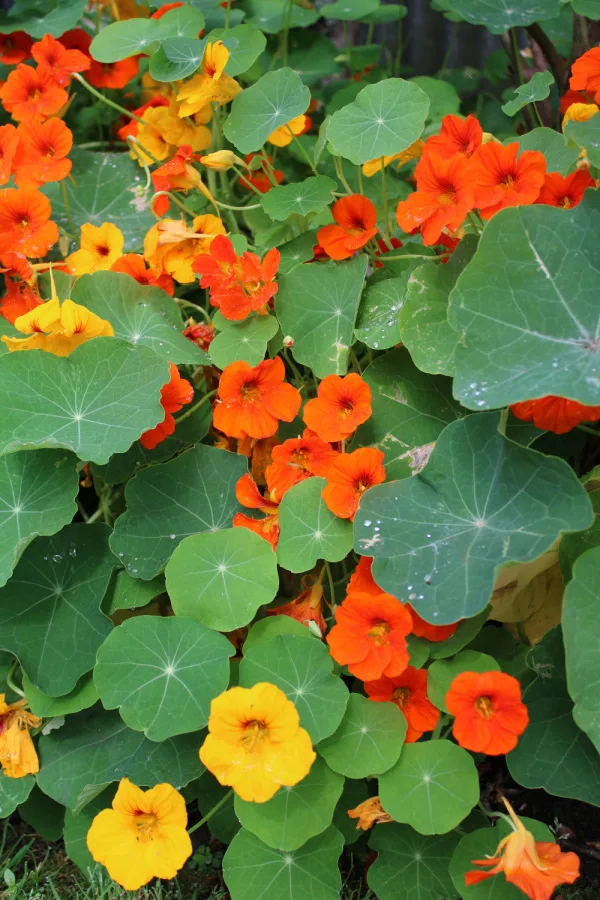
Nasturtiums grow either as a perennial in zones 9 to 11, or as an annual in all other zones. They actually do best when grown in poor soil locations, making them a great choice for that corner of your garden where other plants might struggle.
Nasturtium blooms feature vibrant colors that have a sweet, delicate fragrance. But watch out because they will give your lunch salad a nice peppery kick when consumed. Keep reading to find out all the reasons why you should include this do-it-all flower in your garden this year!
Varieties of Nasturtiums – Grow Nasturtium In your Garden
There are over 80 different species of nasturtiums. They are usually categorized into two main groups: Climbing or mounding/dwarf.
Climbing nasturtiums, like red blooming Mahogany Gleam, can grow to a massive 12 feet tall. They work great for growing up walls, fences, trellises, pergolas, etc to create beautiful living architecture pieces.
Mounding or dwarf nasturtiums are shorter and only grow a couple of feet wide and tall. They are perfect for compact spaces or growing in gardens amongst other beneficial plants and vegetables. Jewel mix is a perfect example that features an assortment of different bloom colors.
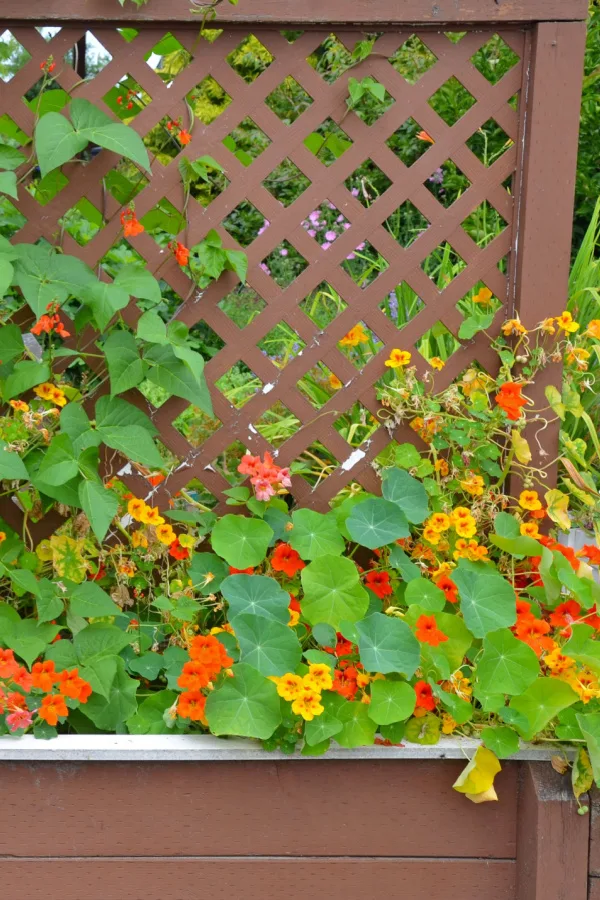
The nasturtium blooms themselves have quite a variety, too. You can find cultivators with either single or double blooms that range in color from pink, red, orange, yellow, white, and variegated. A stunning double-bloom nasturtium that features variegated orange blooms is Orange Gleam.
Why You Should Grow Nasturtiums In Your Garden
While it may be difficult to figure out which variety and color of nasturtium you want to grow in your garden, here are a few reasons why you should include them.
Low Maintenance
One of the best reasons that nasturtiums are a great flower to grow in your garden is that they are extremely easy to plant and even easier to maintain. They work perfectly when grown next to other easy-grow annual plants like zinnias, marigolds, and cosmos.
While they don’t like to be transplanted or moved once they germinate, you can easily grow them from seeds when planted directly in gardens, flowerbeds, or containers. If you do have to start them inside, grow them in decomposable containers like peat pots. This will allow you to plant them in the soil without disturbing their roots – pot and all.
Unlike many plants and flowers, you need to ensure that the soil where you are planting them isn’t overly fertile. In fact, nasturtiums grow best in poorer-quality soils. In addition, you won’t need to add any fertilizers as they grow.
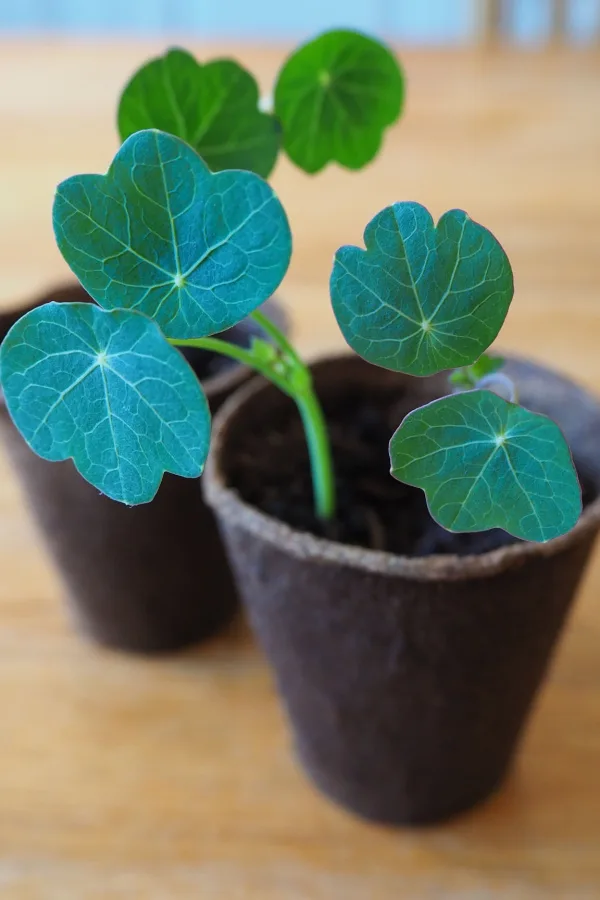
Choose a bright, sunny spot that has well-draining soil and your nasturtiums should thrive. You can grow them in partial shade, but they won’t have quite as vibrant blooms. As long as you water them occasionally during the growing season, you will be rewarded with a fragrant, colorful display.
Great Companion Plants – Grow Nasturtium In your Garden
Probably the best feature of nasturtiums is that they make perfect companion plants for your other garden flowers and vegetables.
Nasturtiums are actually very good at attracting aphid and squash bug infestations. While that might sound like a bad problem, it can actually help other plants and vegetables that are more susceptible to aphids and squash bugs. They can also help to repel Japanese beetles as well.
Nasturtiums are often referred to as a “trap crop” – crops that help to attract pests to it instead of other more vulnerable plants. Grow nasturtiums next to broccoli, cabbages, cucumbers, melons, pumpkins, squashes, and other at-risk plants.
The nasturtiums will help lure the aphids and squash bugs away from those plants and become the perfect host. You can then easily remove aphids with a strong blast of water and just hand-pick off the squash bugs. It’s a more manageable and completely organic way of doing pest control.
Attracting Pollinators – Grow Nasturtium In your Garden
Due to all of their bright, colorful blooms, nasturtiums are perfect for attracting pollinators to your garden. And as all gardeners know, pollinators are essential for having stunning blooms and a productive garden harvest.
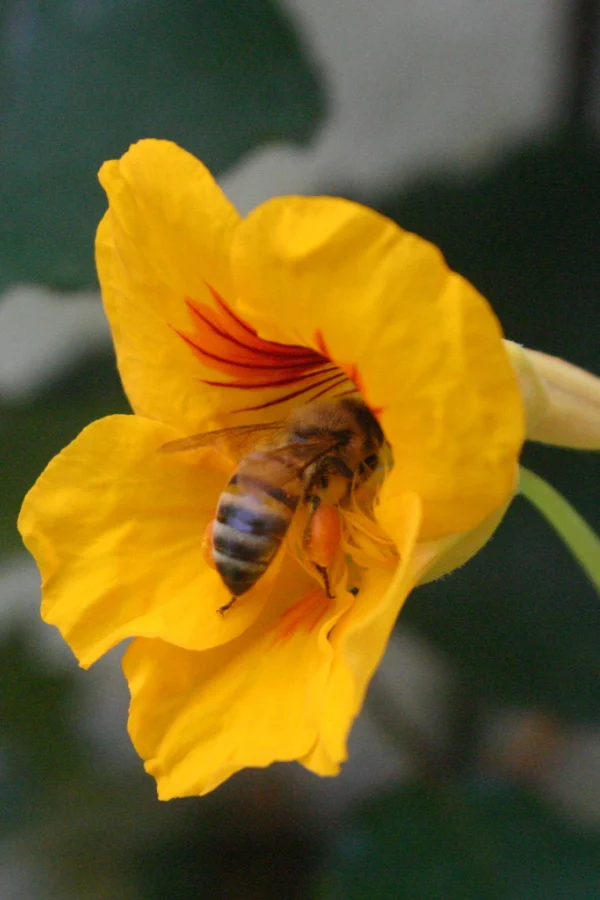
Nasturtium blooms feature long and open trumpet-shaped petals that are a great landing place for bees, butterflies, and other pollinating insects. They are also the perfect shape for hummingbirds to hover around for a quick drink. They are a perfect addition to butterfly gardens and other annual flowerbeds.
Nasturtium plants bloom during the cooler weather months of late spring or early fall, depending on when you plant them. As the weather heats up during the summer, their blooming may slow down or stop altogether.
Pruning spent flowers may help to prolong blooming. (Just be sure to keep the following reason why you should grow nasturtiums in your garden in mind before pruning!)
Edible Blooms – Grow Nasturtium In your Garden
Another great bonus to growing nasturtiums in your garden is that their leaves and blooms are all edible. When consumed raw, they add a slightly spicy, pepper-like flavor to salads.
Freshly picked blooms add a stunning pop of color to appetizers and salads. You can also add them at the end of cooking dishes like sauces, dips, and dressings.
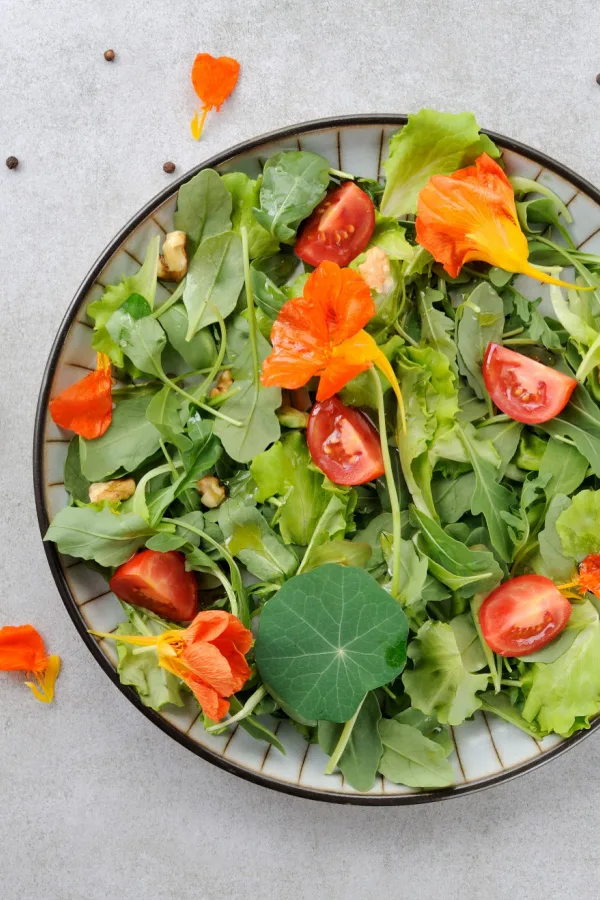
Keep in mind that their flavors will get stronger and slightly offensive if plants aren’t in the right growing condition. Avoid overwatering and adding fertilizers for the best flavor and spice.
For milder flavors, pick your flowers and leaves early in the day. For more of a spice flavor, pick them later in the day. Use them as soon as you pick them for the best results.
With all of these reasons and more, it’s no surprise that nasturtiums are a great addition to any garden or flowerbed space!
Follow Our Facebook Page For Even More Great Tips! Simple Garden Life Facebook Page
Simple Garden Life is a website dedicated to keeping gardening fun, simple and enjoyable! We publish two new articles each week along with a new garden podcast episode every two weeks. This article may contain affiliate links.
